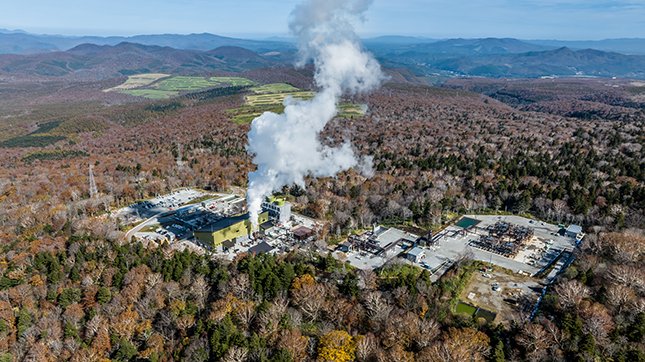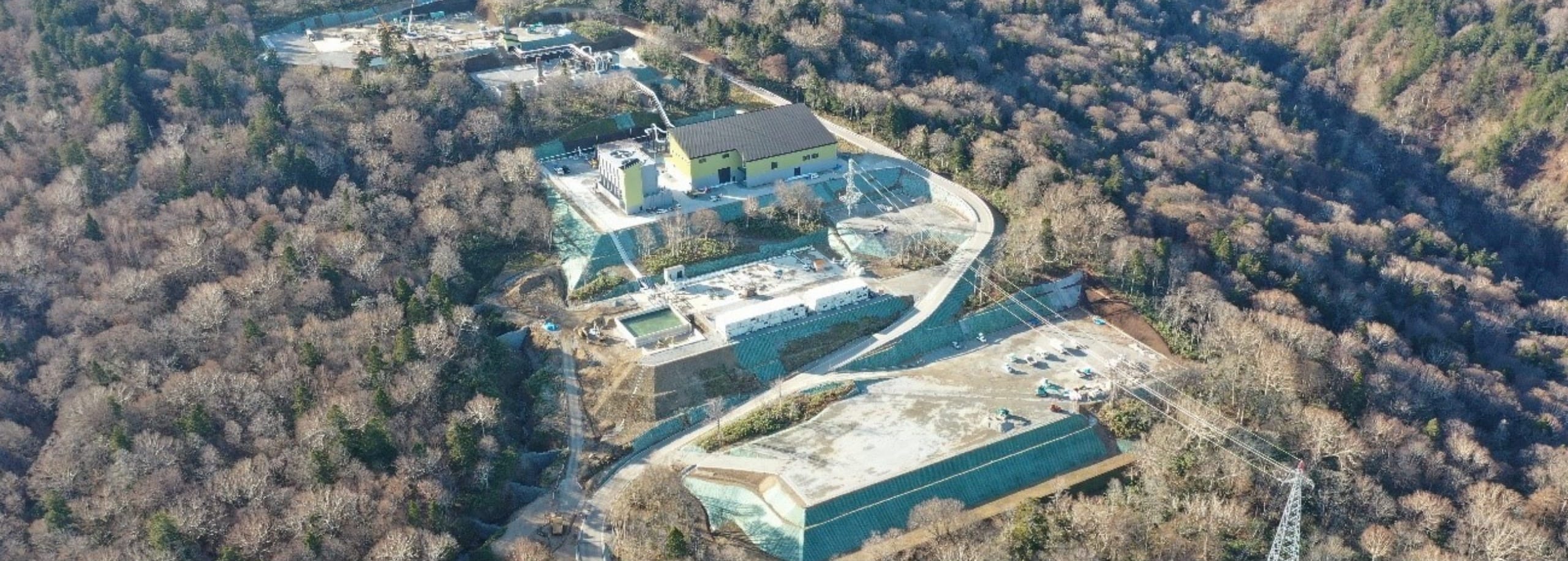
- Home
- Corporate
- Our Commitment
- Exploring "Our Commitment"
- The Future Geothermal Power Generation Is Moving Toward
and global warming
The Future Geothermal
Power
Generation
Is Moving Toward
Humanity has been relying on fossil fuels such as coal, oil, and natural gas since the Industrial Revolution.
However, coal is estimated to run out in the next 100 years, and oil and natural gas in the next 50 years.
We will not be able to sustain our society unless we secure energy by means other than fossil fuels.
Fossil fuels also emit greenhouse gases, which are the main cause of global warming.
Extreme weather is already occurring around the world and bringing about many problems,
such as rising sea levels and impacts on ecosystems.
Thus, in order to halt global warming as soon as possible, many countries are acting together to
effectively reduce their greenhouse gas emissions to zero and aiming to become carbon neutral.
One way to achieve this is through the use of renewable energy.
Mitsubishi Materials has been contributing to carbon neutrality by working on geothermal,
hydroelectric, and solar power generation. Among these, geothermal power generation--
which we have been working on since the 1960s--is a purely domestic energy source that
can provide a stable supply of electricity regardless of the weather.
We are developing an integrated geothermal power generation business,
rom geothermal resource surveys to plant engineering and operation management.
We hope to use the know-how and technological capabilities we have accumulated
until now to contribute to solving the world's energy issues and global warming.
-
Provides a
stable supply of
energyGeothermal energy is a type of
renewable energy that is not
influenced by the weather or
seasons. It can provide a
stable supply of
electricity. -
Benefits
the community
as wellThe hot water remaining after steam separation can be used as energy for greenhouse cultivation, aquaculture businesses, etc.
-
Contributes
to achieving
carbon neutralityAmong renewable energy sources, it is the second lowest CO2 emission power generation method after hydropower.
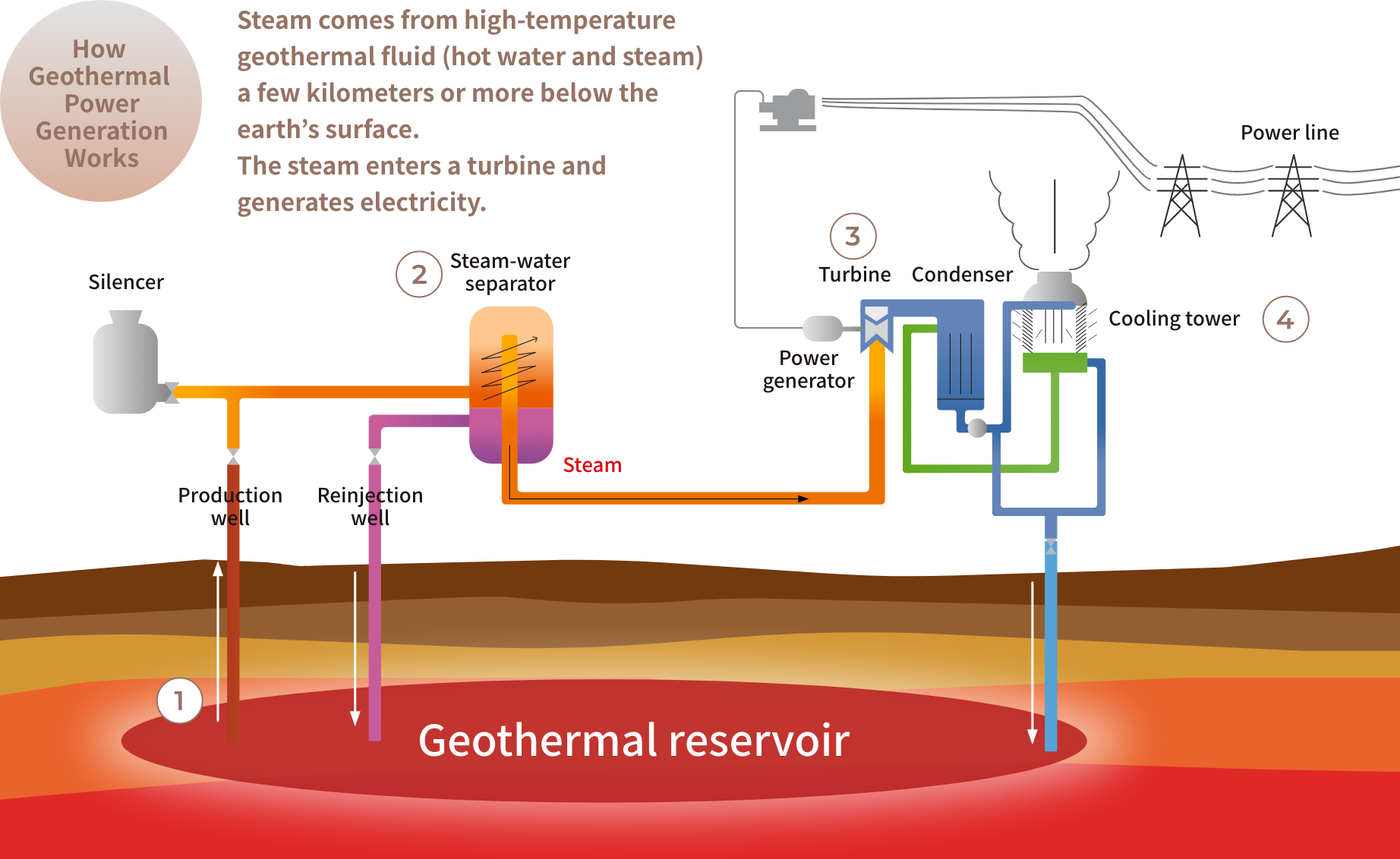
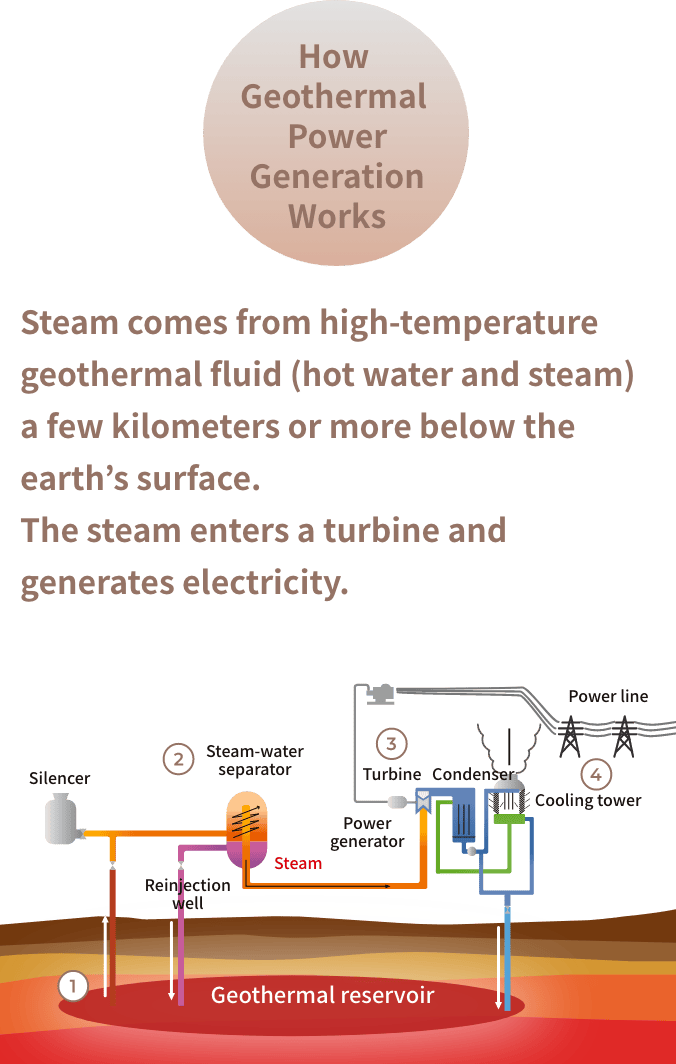
![]() Production wells are dug into the underground geothermal reservoir, and the geothermal fluid is extracted.
Production wells are dug into the underground geothermal reservoir, and the geothermal fluid is extracted.
![]() The geothermal fluid is separated into steam and hot water using a steam-water separator, and the hot water is then
returned into the underground reservoir via reinjection wells.
The geothermal fluid is separated into steam and hot water using a steam-water separator, and the hot water is then
returned into the underground reservoir via reinjection wells.
![]() The steam enters turbines to generate electricity.
The steam enters turbines to generate electricity.
![]() After generating electricity, the steam is converted into water in a condenser, cooled in a cooling tower, and then
circulated back to the condenser to be used in steam cooling.
After generating electricity, the steam is converted into water in a condenser, cooled in a cooling tower, and then
circulated back to the condenser to be used in steam cooling.
 Surveys start in Kazuno City, Akita Prefecture.
Surveys start in Kazuno City, Akita Prefecture.
 Commercial operations start at the Onuma Geothermal Power Station.
Commercial operations start at the Onuma Geothermal Power Station.
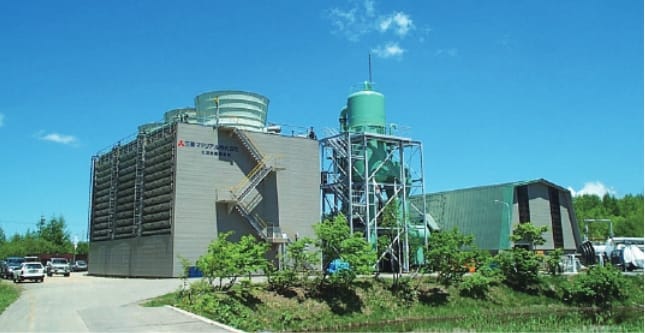
 Hachimantai Geothermal Corporation (now Hachimantai Green Energy Co., Ltd.)
Hachimantai Geothermal Corporation (now Hachimantai Green Energy Co., Ltd.)
is established to manage operations.
 Sumikawa Geothermal Power Station*
Sumikawa Geothermal Power Station*
(Kazuno City, Akita Prefecture) begins
operations
*Steam supply: MMC
Power generation: Tohoku Electric Power., Inc.
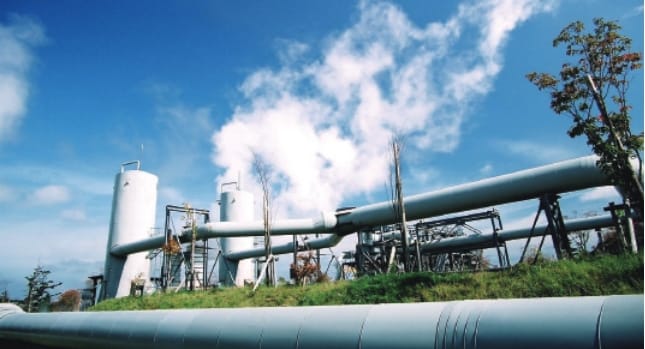
 Yuzawa Geothermal Power Corporation is established
Yuzawa Geothermal Power Corporation is established
 Environmental surveys start in Hachimantai City, Iwate Prefecture
Environmental surveys start in Hachimantai City, Iwate Prefecture
 Appi Geothermal Energy Corporation is established
Appi Geothermal Energy Corporation is established
 Yuzawa Geothermal Power Corporation started operation of Wasabizawa Geothermal Power Plant
Yuzawa Geothermal Power Corporation started operation of Wasabizawa Geothermal Power Plant
(Yuzawa City, Akita Prefecture), the first domestic,
large-scale geothermal power plant in 23 years
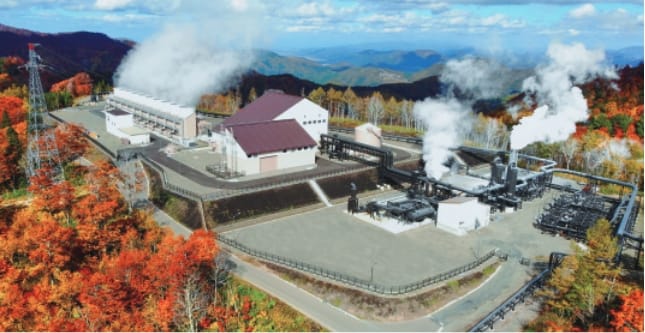
 Appi Geothermal Energy Corporation started operation of Appi Geothermal Power Plant
Appi Geothermal Energy Corporation started operation of Appi Geothermal Power Plant
(Hachimantai City, Iwate).
